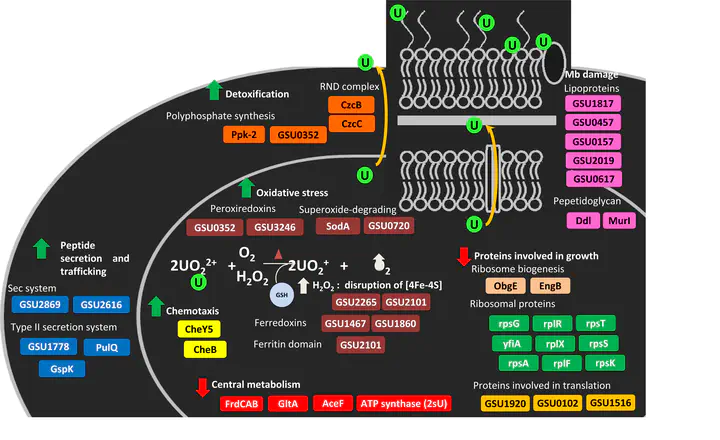 Image credit: [Lovley Lab]
Image credit: [Lovley Lab]Abstract
Geobacter species often play an important role in the in situ bioremediation of uranium-contaminated groundwater, but little is known about how these microbes avoid uranium toxicity. To evaluate this further, the proteome of Geobacter sulfurreducens exposed to 100 µM U(VI) acetate was compared to control cells not exposed to U(VI). Of the 1363 proteins detected from these cultures, 203 proteins had higher abundance during exposure to U(VI) compared with the control cells and 148 proteins had lower abundance. U(VI)-exposed cultures expressed lower levels of proteins involved in growth, protein and amino acid biosynthesis, as well as key central metabolism enzymes as a result of the deleterious effect of U(VI) on the growth of G. sulfurreducens. In contrast, proteins involved in detoxification, such as several efflux pumps belonging to the RND (resistance-nodulation-cell division) family, and membrane protection, and other proteins, such as chaperones and proteins involved in secretion systems, were found in higher abundance in cells exposed to U(VI). Exposing G. sulfurreducens to U(VI) resulted in a higher abundance of many proteins associated with the oxidative stress response, such as superoxide dismutase and superoxide reductase. A strain in which the gene for superoxide dismutase was deleted grew more slowly than the WT strain in the presence of U(VI), but not in its absence. The results suggested that there is no specific mechanism for uranium detoxification. Rather, multiple general stress responses are induced, which presumably enable Geobacter species to tolerate high uranium concentrations.
Supplementary notes can be added here, including code and math.